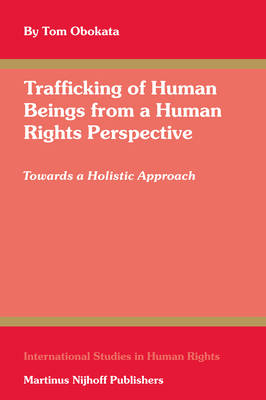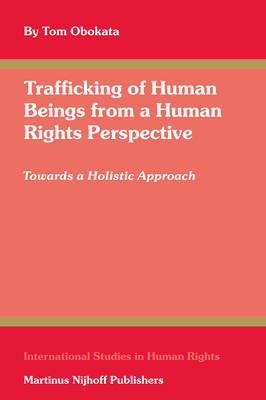
- Afhalen na 1 uur in een winkel met voorraad
- Gratis thuislevering in België vanaf € 30
- Ruim aanbod met 7 miljoen producten
- Afhalen na 1 uur in een winkel met voorraad
- Gratis thuislevering in België vanaf € 30
- Ruim aanbod met 7 miljoen producten
Zoeken
€ 242,95
+ 485 punten
Omschrijving
Trafficking of human beings is a widespread practice in the modern world. It has been estimated that between 600,000 and 800,000 people, the majority of whom are women and children, are trafficked worldwide each year. The rapid growth in trafficking of human beings and its transnational nature have prompted the international community to take urgent action, and a major step was taken when the United Nations adopted the Protocol to Prevent and Suppress Trafficking in Persons, Especially Women and Children (Trafficking Protocol), attached to the United Nations Convention against Transnational Organised Crime (Organised Crime Convention) in December 2000. Yet addressing the human rights aspects of the phenomenon has proven to be difficult in practice, and so far a holistic approach which addresses wider issues surrounding the phenomenon has not been taken.
The purpose of this book is to go further than simply recognising that trafficking is a human rights issue. It attempts to establish a human rights framework to analyse and address the act by identifying applicable human rights norms and principles from the beginning to the end of the trafficking process, such as the rights to life, work, health, as well as freedom from torture and slavery. It then articulates key obligations under international human rights law, including the obligations to prohibit trafficking, punish traffickers, protect victims, and to address the causes and the consequences of the practice.
The purpose of this book is to go further than simply recognising that trafficking is a human rights issue. It attempts to establish a human rights framework to analyse and address the act by identifying applicable human rights norms and principles from the beginning to the end of the trafficking process, such as the rights to life, work, health, as well as freedom from torture and slavery. It then articulates key obligations under international human rights law, including the obligations to prohibit trafficking, punish traffickers, protect victims, and to address the causes and the consequences of the practice.
Specificaties
Betrokkenen
- Auteur(s):
- Uitgeverij:
Inhoud
- Aantal bladzijden:
- 266
- Taal:
- Engels
- Reeks:
- Reeksnummer:
- nr. 89
Eigenschappen
- Productcode (EAN):
- 9789004154056
- Verschijningsdatum:
- 30/08/2006
- Uitvoering:
- Hardcover
- Formaat:
- Genaaid
- Afmetingen:
- 155 mm x 235 mm
- Gewicht:
- 614 g

Alleen bij Standaard Boekhandel
+ 485 punten op je klantenkaart van Standaard Boekhandel
Beoordelingen
We publiceren alleen reviews die voldoen aan de voorwaarden voor reviews. Bekijk onze voorwaarden voor reviews.








